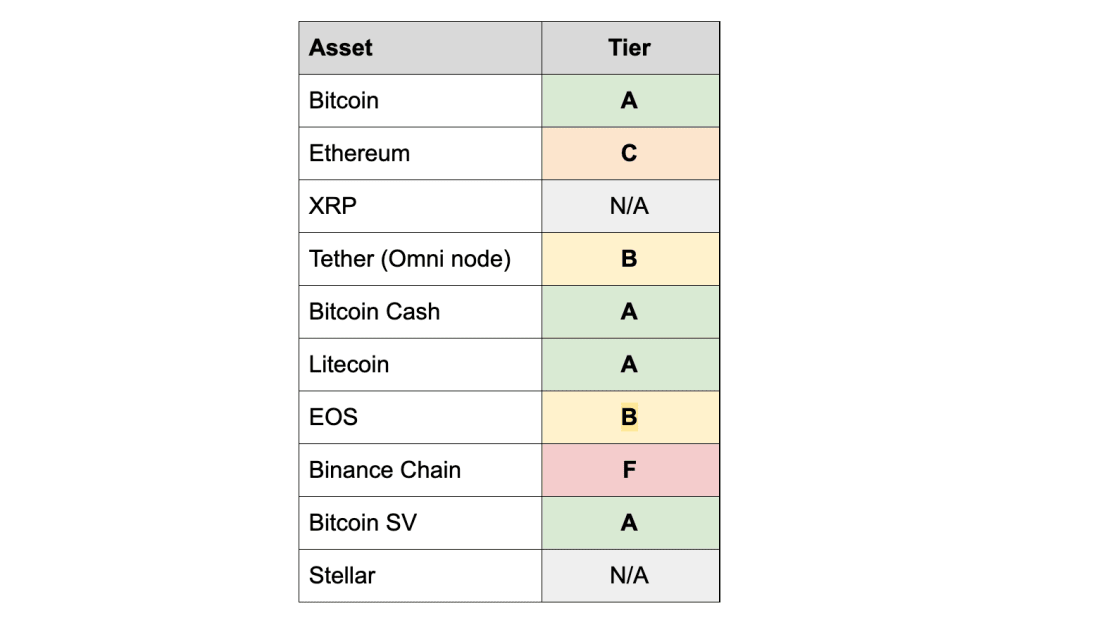Coin Metrics is grading each of the top 10 digital assets by market cap in terms of their “auditability,” giving high marks to Bitcoin and its derivative currencies, while panning EOS, Binance Chain, Stellar and XRP.
Auditing cryptocurrencies is important because it can lead to discoveries of hidden inflation. Such audits previously revealed anomalies in the supply of Bitcoin Private, a fork-merge of Bitcoin and ZClassic, as well as an inflation bug in the Stellar supply, which the Stellar Development Foundation rectified by burning its native cryptocurrency XLM, according to Coin Metrics.
The company audits crypto assets by synchronizing a node to the network, extracting raw blockchain data and then rebuilding the asset’s ledger independently.
Synchronization involves either getting a recent snapshot or the entire history of the asset’s blockchain.
Says Coin Metrics,
“For some assets and node configuration, completing this process requires a lot of patience (and expensive hardware). As an example, synchronizing a full archive EOS node took more than one month and required a machine with terabytes of NVMe SSDs, some of the fastest storage available.
Finally, a handful of assets, most notably Ripple, require such huge amounts of storage (tens of TBs) that they are impractical to run and synchronize.”
Node Operation Ranking

In terms of ease of synchronization, XRP and Stellar receive N/As because Coin Metrics doesn’t operate nodes for either assets; rather they rely on APIs provided by Ripple and the Stellar Foundation.
EOS receives an F due the difficulty of extracting the data on the asset’s blockchain needed to run a complete audit. Binance Chain gets an F because, of the 35 assets Coin Metrics manages nodes for, it’s the only one that doesn’t make its source code available. It also has a complex fee schedule for its decentralized exchange (DEX).
Ledger reconstruction is based on the cryptocurrency’s accounting model: Bitcoin and its derivatives are “UTXO-based,” while Ethereum and many other assets are “account-based.”
“The ledger for UTXO-based chains’ consists of a set of unspent transaction outputs (UTXO). Therefore, rebuilding the asset’s ledger consists of tracking which transaction outputs are unspent. For account-based chains, the ledger is closer to a mapping of accounts to their balance. In order to rebuild it, auditors have to keep track of credits and debits for each account.”
UTXO sets are simpler to track.
Ledger Reconstruction Ranking

In terms of ease of ledger reconstruction, Ripple and Stellar again receive NAs due to the fact that Coin Metrics cannot reconstruct their ledgers completely and must rely on APIs provided by third parties.
Ethereum receives a C, because the current state of tools Coin Metrics uses “don’t allow a full reconstruction of the ledger only using the data exposed by tracing, the changes made in the DAO hard fork have to be manually implemented.”
And Binance Chain receives another F because complexity of its DEX and its lack of open-source code prevent the crypto financial data firm from reconstructing the platform’s ledger.





